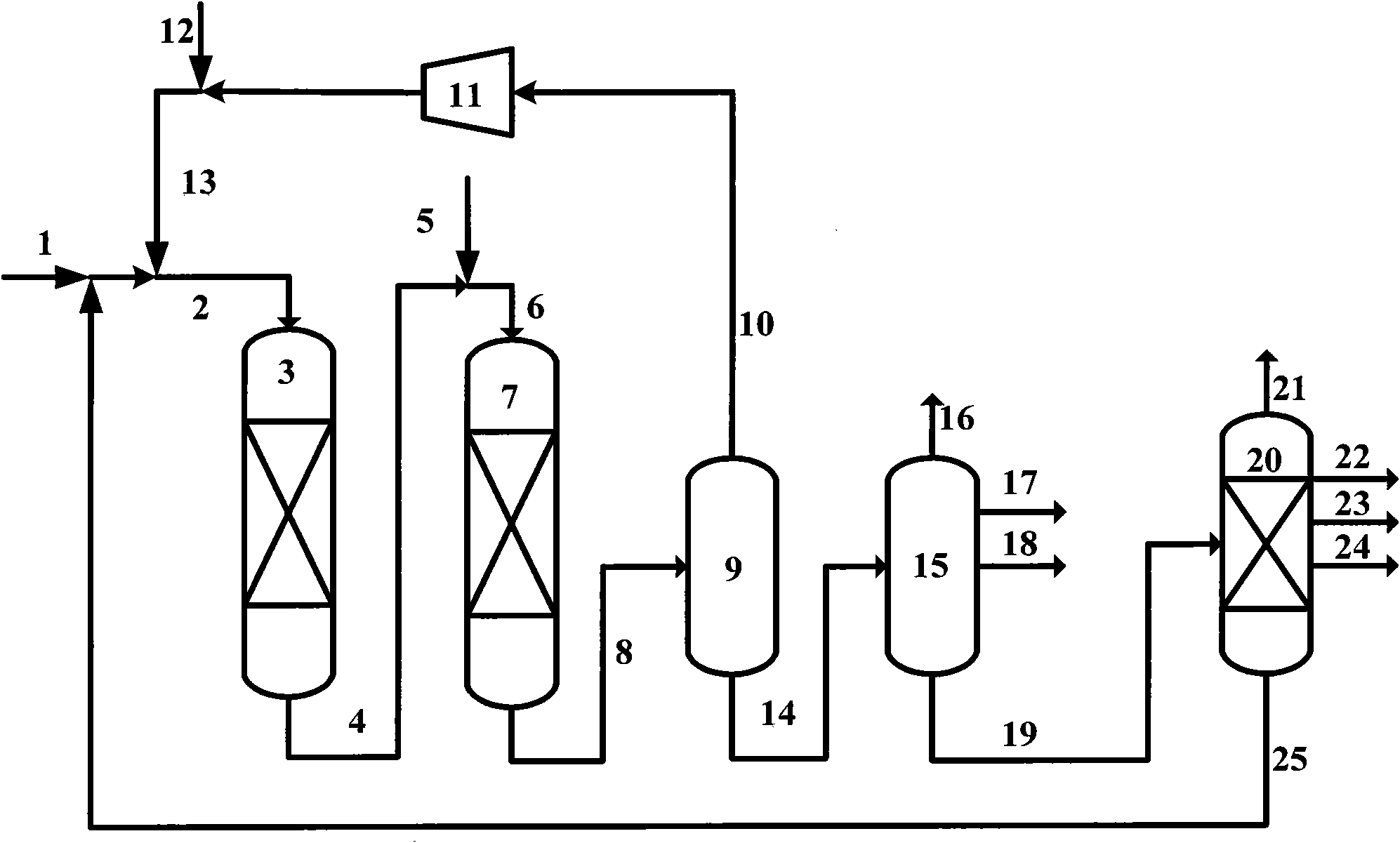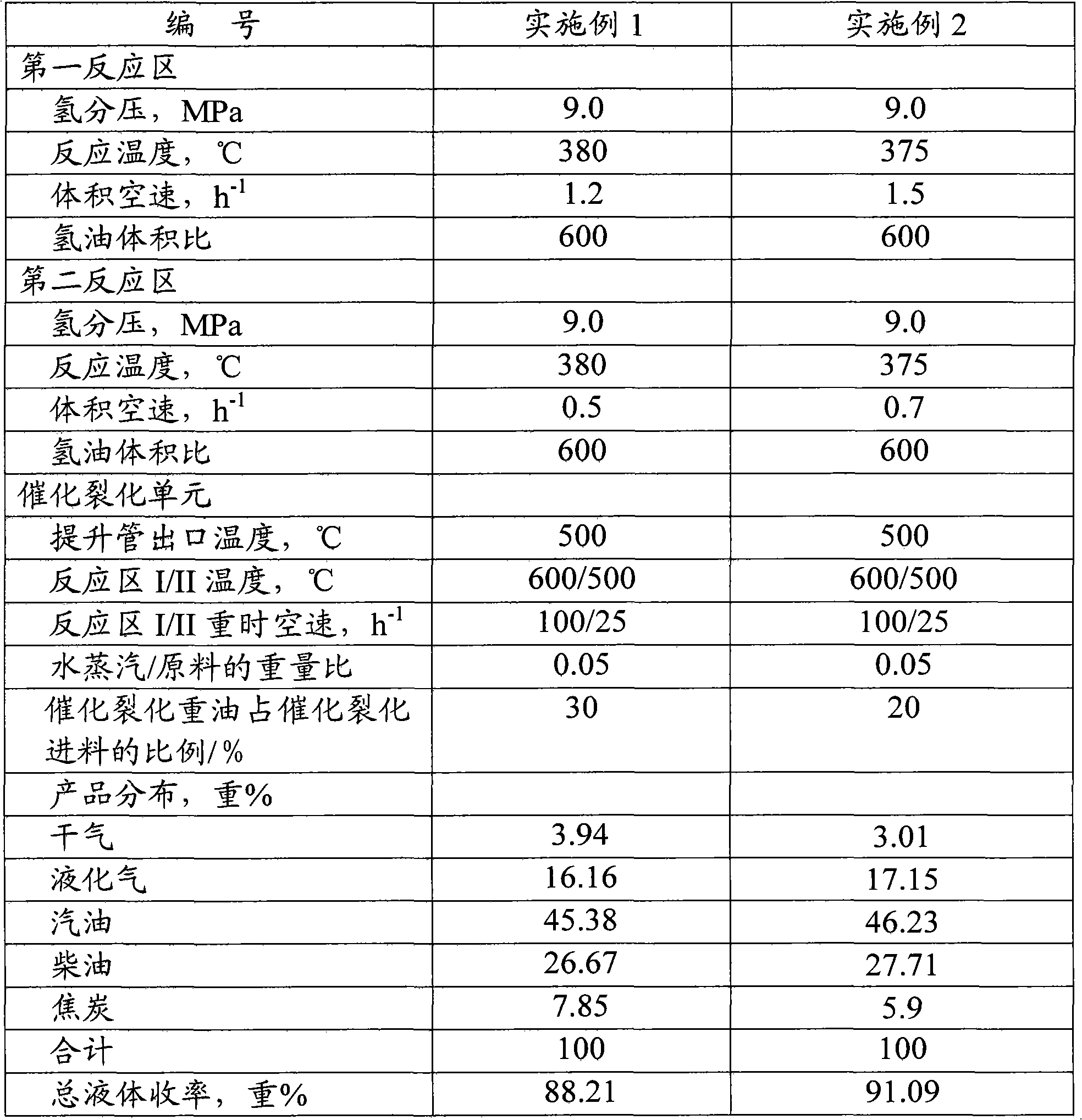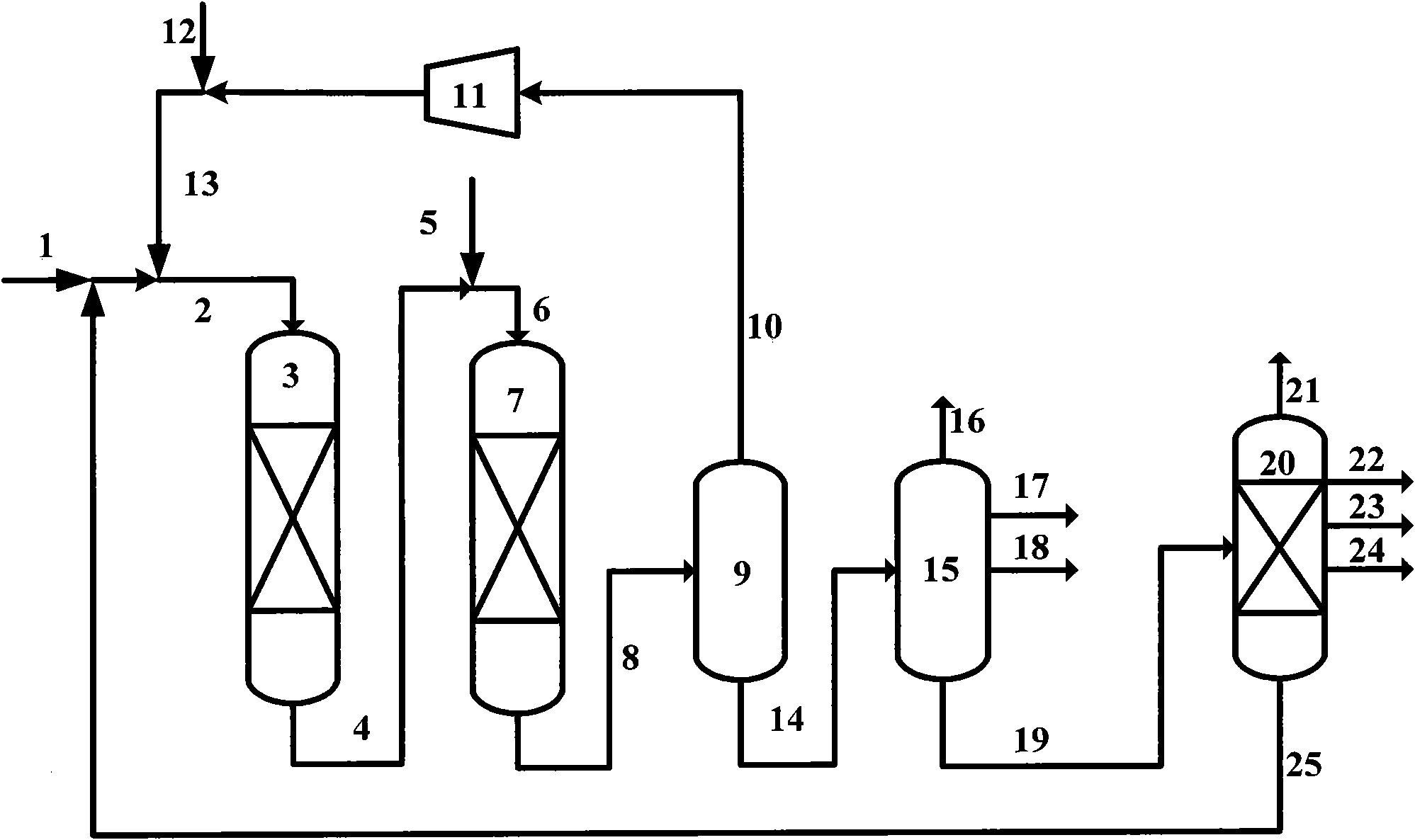Method using gas oil and residual oil to process light fuel
A technology for light fuel and gas oil, applied in the processing field of hydrocarbon oil, can solve the problems of large equipment investment, and achieve the effects of low investment cost, saving investment cost and operating cost, and low pressure
- Summary
- Abstract
- Description
- Claims
- Application Information
AI Technical Summary
Problems solved by technology
Method used
Image
Examples
Embodiment 1
[0032] The mixture of gas oil, catalytically cracked heavy oil and hydrogen enters the first hydrogenation reaction zone to contact with hydrogenation protection agent, hydrogenation deasphaltene agent, and hydrofining catalyst in order to react, based on the volume of catalyst in the first hydrogenation reaction zone The loading volume percentages of hydrogenation protecting agent, hydrodeasphaltene agent and hydrorefining catalyst are respectively 8 volume %, 15 volume % and 77 volume %; the reaction products are directly mixed with residual oil without separation and enter the In the second hydrogenation reaction zone, the weight percentage of residual oil entering the second hydrogenation reaction zone is 30% by weight based on the whole liquid-phase feed of the second hydrogenation reaction zone. The mixed raw material is sequentially contacted with the residual oil hydroprotecting agent, the residual oil hydrodemetallization catalyst and the residual oil hydrotreating cat...
Embodiment 2
[0036] The process flow of this embodiment is the same as that of Embodiment 1. The difference from Example 1 is that, based on the entire liquid-phase feed to the second hydrogenation reaction zone, the weight percentage of residual oil entering the second hydrogenation reaction zone is 15% by weight. Based on the catalyst volume in the first reaction zone, the loading volume percentages of hydrogenation protecting agent, hydrodeasphaltene agent and hydrorefining catalyst are 5 volume %, 12 volume % and 83 volume % respectively; Based on the volume, the loading volume percentages of the residual oil hydroprotecting agent, the residual oil hydrodemetallization catalyst and the residual oil hydrotreating catalyst are 5 vol%, 35 vol%, and 60 vol%, respectively. The catalytic cracking heavy oil obtained in this embodiment accounts for 20% by weight of the catalytic cracking feed,
[0037] Table 3 shows the reaction conditions of the first hydrogenation reaction zone, the second ...
PUM
 Login to View More
Login to View More Abstract
Description
Claims
Application Information
 Login to View More
Login to View More - R&D
- Intellectual Property
- Life Sciences
- Materials
- Tech Scout
- Unparalleled Data Quality
- Higher Quality Content
- 60% Fewer Hallucinations
Browse by: Latest US Patents, China's latest patents, Technical Efficacy Thesaurus, Application Domain, Technology Topic, Popular Technical Reports.
© 2025 PatSnap. All rights reserved.Legal|Privacy policy|Modern Slavery Act Transparency Statement|Sitemap|About US| Contact US: help@patsnap.com



